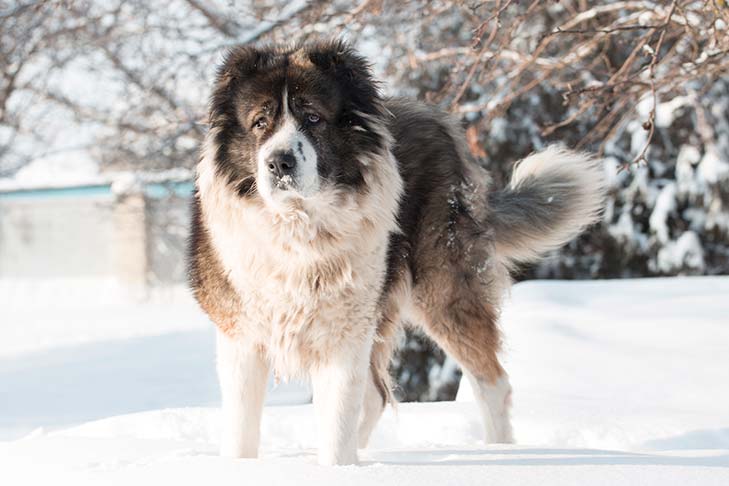Being a serious guardian breed, Caucasian Shepherd dogs should never be taken lightly. While the Caucasian is sensitive, faithful, kind, and lovable to his family, including other family pets, he is bold, fearless, self-assured, and fierce when a threat is present. Since ancient times, Caucasian Shepherd dogs have served a variety of purposes, including guarding cattle against both large and small predators like wolves and coyotes as well as protecting properties from trespassers. They are primarily used as companions and watchdogs in modern times, particularly in the West. Depending on where they are from, Caucasian dogs come in a wide variety of breeds. There have been two breed kinds and standards for almost a century:
The Steppe type, a shorter-coated dog with a lighter body mass, as opposed to the Mountain type, which has a longer coat and a higher body mass. Other names for the breed include Kaukasische Schaferhund, Kawkasky Owtscharka, Caucasian Ovcharka, and Caucasian Sheepdog.




 Health
Health Grooming
Grooming Exercise
Exercise Training
Training Nutrition
Nutrition